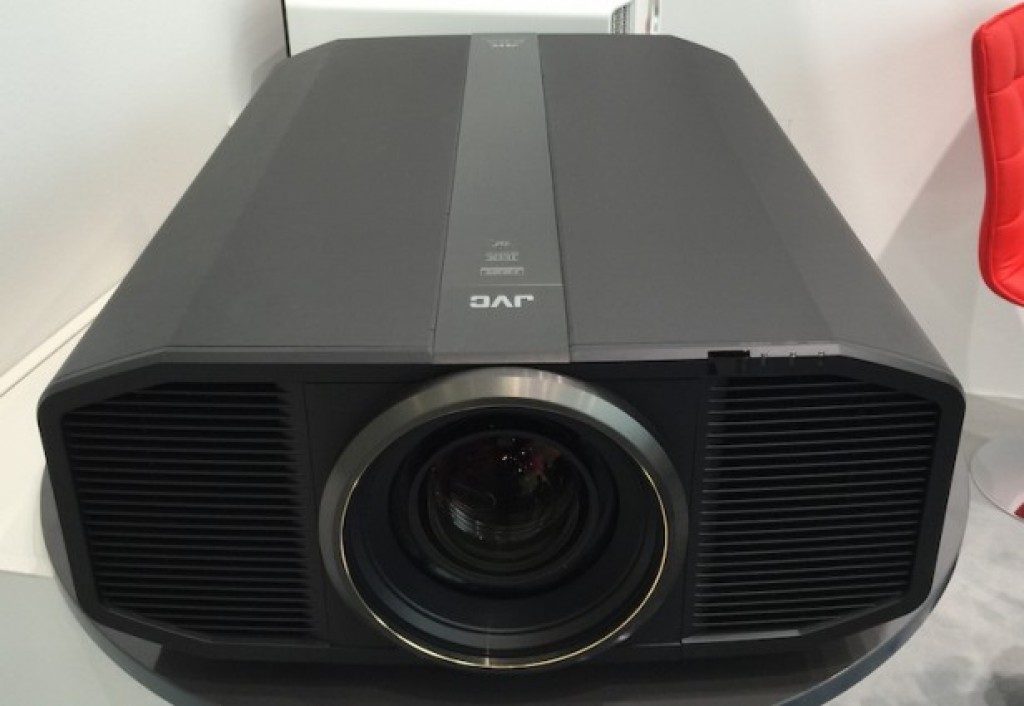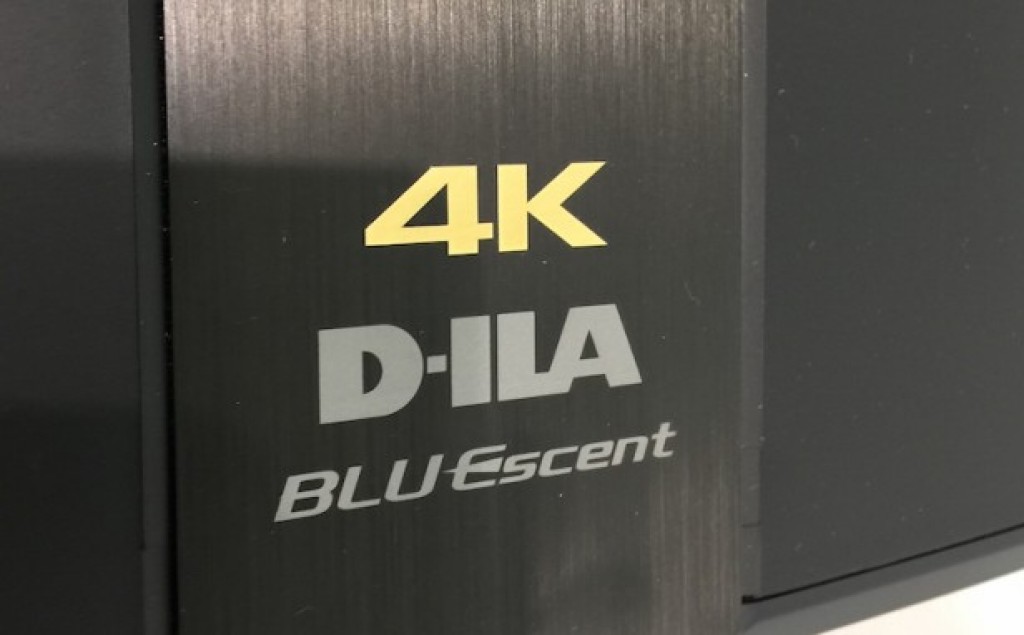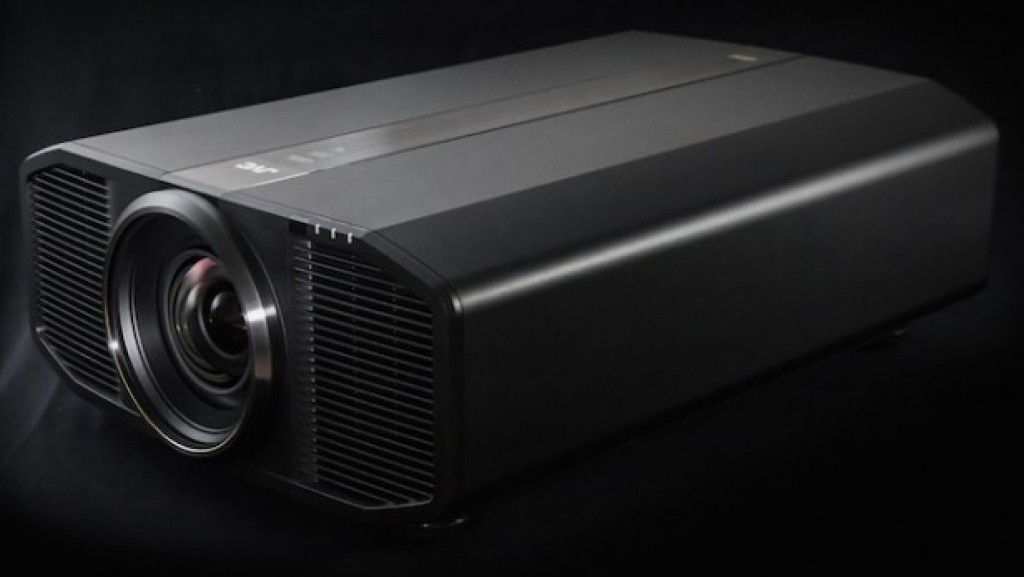
KEY FEATURES
- DLA projector technology with laser lighting
- Native 4096×2180 resolution
- HDR playback, including HLG support
- 3000 lumens claimed brightness
- Claimed infinite contrast ratio
- Manufacturer: JVC
- Review Price: £30,000.00
JVC DLA-Z1 HANDS-ON: A NATIVE 4K PROJECTOR THAT’S SPECTACULAR BUT SERIOUSLY EXPENSIVE
While native 4K pictures are relatively easy for TVs to deliver, they’re a serious challenge for projectors. Having to fit so many pixels onto imaging chips often less than an inch across must be the stuff of engineering nightmares.
Prior to the IFA 2016 technology show in Berlin, only Sony had managed to deliver native 4K projection for the home. Now, though, we can add another brand to the true 4K projector list: JVC.
JVC’s been making pseudo-4K projectors for a couple of years now – models which use a double-HD imaging chip system and processing to deliver a 4K effect. Its new DLA-Z1, though, offers the real 4K McCoy, with a native pixel count of 4096 x 2180.

Before JVC projector fans start doing cartwheels across their home cinema rooms, there’s an awkward bit of information to share right away: the Z1 costs £30,000. That’s more than eight times as much as JVC’s DLA-X5000 e-Shift 4K projector, and more than three times as much as Sony’s new VPL-VW550ES native 4K projector.
The extra cost isn’t just a result of all those pixels the Z1 carries, though. Also key is a ‘Blu-Escent’ laser-based lighting system that delivers a claimed brightness of 3,000 lumens – pretty much double the light output of normal JVC lamp-based projectors such as the recently reviewed JVC DLA-X7000. This should prove very handy in helping the Z1 deliver a convincing HDR performance.
Also helping to cushion that cost, lasers last longer than normal lamps – for 20,000 hours in the Z1’s case -– and don’t constantly lose brightness during their lifetime. Even better, the Z1 applies an apparently unique dynamic light control system to its laser optics to boost contrast. This works so well that JVC claims a contrast ratio for its projector of 1:infinity.
Another eye-catching number on the Z1’s spec sheet finds it claiming coverage of a full 100% of the digital cinema DCI-P3 colour system – the current target for HDR TVs – and 80% of the BT 2020 standard selected for domestic HDR.

JVC has additionally added a new all-glass lens designed for 4K, optimised its image processing, and introduced an automated HDR-recognition system.
For its demonstration of the Z1’s powers, JVC used Ultra HD content that included clips from the Lucy and Deadpool Ultra HD Blu-rays. And, as you’d hope from a £30,000 projector, for the most part the picture quality was sensational.
Colours with these HDR sources was particularly incredible. The range of tones was wider and saturation levels were far more rich and intense than I’ve seen on any projector outside a commercial cinema.
I was also hugely impressed (and relieved) to see no trace of colour banding in HDR skies or shots of the sea in some of JVC’s own footage. I’d even say the Z1 had the edge in colour terms over Sony’s seemingly magnificent (but £50,000) VW5000ES laser projector.
Once I’d recovered from the quality of the Z1’s colours, I then noticed the thing I’d actually expected to spot first: its spectacular resolution. The difference in clarity and detail between the native 4K Z1 and JVC’s e-shift models is instantly apparent – and there’s also noticeably less noise in the Z1’s pictures. By the time you’ve added JVC’s HDR colour finesse to the equation I’d say the Z1 makes its 4K resolution count even more than Sony’s 4K projectors.
The laser lighting system, meanwhile, delivers brightness that’s worlds apart from anything JVC home projectors have achieved before. This higher overall brightness and the resulting extra detail in dark areas help the Z1 to look vastly more comfortable with HDR than any of the company’s cheaper projectors.

The Z1 delivered these dynamic images seemingly without suffering any light instability too, and while still delivering a strong black-level performance – something JVC’s D-ILA projectors have always been renowned for.
The demo of the Z1 suggests that even £30,000 doesn’t buy you complete HDR projection perfection, though. While the general brightness level is much higher, even 3,000 nits seems as if it’s not quite enough to deliver peak HDR highlights with the same life-like intensity witnessed on the best HDR TVs.
Also, during HDR shots containing a very extreme contrast range, such as the sequence in Lucy where Morgan Freeman gives a lecture, the darkest parts of the image look a touch too dark. This makes them appear slightly dominant and a little short on subtle shading detail. Finally, there’s a trace of clipping in the very brightest areas.
There’s a good chance, though, that JVC’s new HDR management system will let you adjust your way around the last two of those issues. More importantly, the issues were dwarfed by the stuff the Z1 gets spectacularly right. And the only home projector I’ve seen that overcomes the Z1’s brightness-related issues with HDR is the Sony VW5000ES, with its massive 5,000 lumens of brightness. However, the Sony costs £20,000 more than the JVC.
The Z1 has leapt to the top of my review wish list for the next few months, with its November launch date circled in red on my calendar. In the meantime, all I can suggest is that you get a very large piggy bank and start putting similarly large quantities of money into it as often as you can.
Source: trustedreviews.com
Source: http://www.trustedreviews.com/jvc-dla-z1-review










































“claiming coverage of a full 100% of the
digital cinema DCI-P3 colour system – the current target for HDR TVs –
and 80% of the BT 2020 standard selected for domestic HDR.”
HDR, including UHD blurays, are being mastered to DCI-P3. BT2020 is a larger colour space which completely encompasses DCI-P3, and is being used for future-proofing, but for now and the foreseeable future it’s only DCI-P3 which matters and BT2020 is effectively just a container.
80% of BT2020 is very impressive though.
£30K is a little rich for my blood but hopefully the tech will trickle down in the usual way.